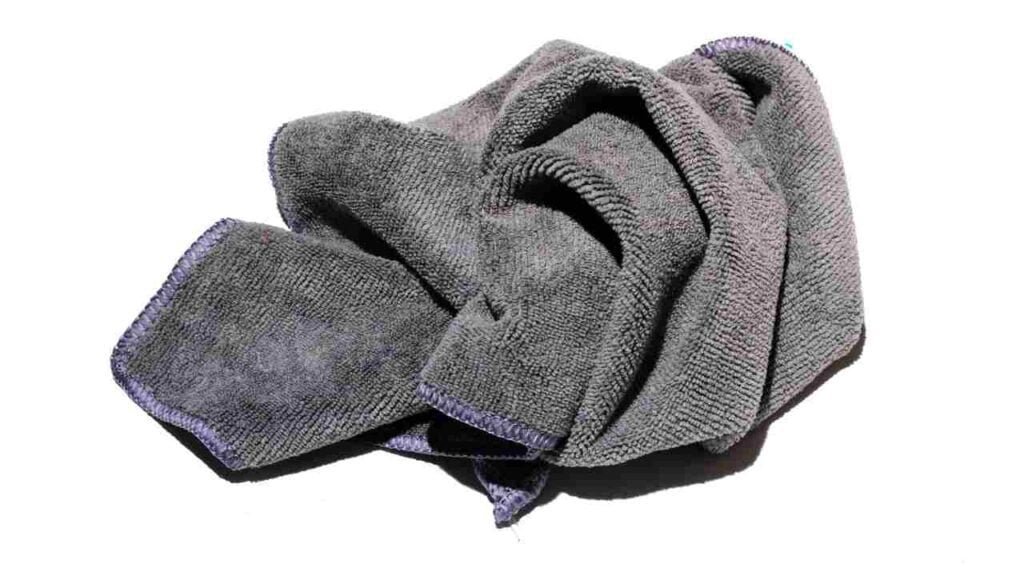 When it comes to cleaning, microfiber cloths have gained popularity for their superior cleaning capabilities. But have you heard about microfiber cloths with silver? These innovative cleaning tools claim to take cleaning to the next level with the added benefits of silver particles. In this blog post, we dive into the world of microfiber cloths with silver, exploring their purpose, benefits, and whether they live up to the hype.
When it comes to cleaning, microfiber cloths have gained popularity for their superior cleaning capabilities. But have you heard about microfiber cloths with silver? These innovative cleaning tools claim to take cleaning to the next level with the added benefits of silver particles. In this blog post, we dive into the world of microfiber cloths with silver, exploring their purpose, benefits, and whether they live up to the hype.
Microfiber cloths have long been praised for their ability to attract and trap dirt, dust, and bacteria, making them a go-to choice for many households. The addition of silver particles to microfiber cloths takes their cleaning power to new heights. Silver is known for its antimicrobial properties, believed to inhibit the growth of bacteria and odor-causing microbes on the cloth’s surface.
The introduction of silver in microfiber cloths opens up a realm of possibilities for cleaner, fresher homes. But does it really make a difference? Are microfiber cloths with silver worth the investment? In the following paragraphs, we’ll delve into the world of microfiber cloths with silver, examining their purpose, benefits, and evaluating their effectiveness. Get ready to discover the potential of these innovative cleaning tools and decide if they’re right for you.
Microfiber Cloths with Silver
To fully grasp the concept of microfiber cloths with silver, it’s important to understand the fundamentals of both microfiber and silver in cleaning. In this section, we’ll explore the characteristics and functions of microfiber cloths, as well as the incorporation of silver particles into their design.
Microfiber cloths are made from incredibly fine synthetic fibers that are thinner than a human hair. These fibers are densely woven, creating a high surface area that enhances their cleaning ability. The microscopic fibers have the remarkable capacity to attract and trap dirt, dust, and even bacteria, making them highly effective in removing contaminants from various surfaces.
The addition of silver particles to microfiber cloths brings an extra level of functionality. Silver has been recognized for its antimicrobial properties for centuries. It is believed to possess the ability to hinder the growth of bacteria, fungi, and other microbes that can lead to unpleasant odors and potential health concerns. When silver particles are incorporated into the fabric of microfiber cloths, they are intended to provide an added layer of defense against microbial growth, promoting a cleaner and more hygienic cleaning experience.
Evaluating the Claims and Benefits
Microfiber cloths with silver come with a range of claims and benefits attributed to the incorporation of silver particles. In this section, we’ll delve deeper into these claims and evaluate their validity, drawing from scientific research, user experiences, and expert opinions.
One of the primary claims associated with microfiber cloths with silver is their antimicrobial properties. It is believed that the silver particles embedded in the fabric inhibit the growth of bacteria, preventing their proliferation and reducing the risk of cross-contamination during cleaning. While silver has long been recognized for its antimicrobial properties, it’s important to examine scientific studies that support these claims and ascertain whether the concentration of silver in the cloth is sufficient to deliver the desired effects.
Furthermore, microfiber cloths with silver are often marketed as providing odor control. The antimicrobial properties of silver are believed to target odor-causing bacteria and minimize unpleasant smells. However, it is crucial to consider user experiences and testimonials to determine if these claims hold true in real-life situations.
Comparing Silver vs. Non-Silver Microfiber Cloths
When it comes to choosing a microfiber cloth, one important consideration is whether to opt for a cloth with silver or a non-silver alternative. In this section, we’ll compare the features, benefits, and potential trade-offs between these two options, helping you make an informed decision based on your specific needs and preferences.
Silver Microfiber Cloths:
Microfiber cloths with silver offer the combined benefits of microfiber’s superior cleaning ability and the antimicrobial properties associated with silver. The incorporation of silver particles aims to inhibit bacterial growth on the cloth’s surface, promoting a cleaner and more hygienic cleaning experience. These cloths are often marketed as providing additional odor control and extended freshness.
Non-Silver Microfiber Cloths:
Non-silver microfiber cloths, on the other hand, do not incorporate silver particles into their design. They rely solely on the inherent cleaning power of the microfiber fabric, attracting and trapping dirt, dust, and bacteria effectively. While non-silver cloths may lack the antimicrobial benefits of silver, they still offer exceptional cleaning capabilities and are widely used and trusted by many households and cleaning professionals.
When comparing silver and non-silver microfiber cloths, several factors come into play. The choice between the two depends on individual preferences, cleaning needs, and considerations such as cost and environmental impact. It’s worth noting that both options can provide effective cleaning results, but the presence of silver in microfiber cloths may offer an added layer of hygiene benefits for those who prioritize antimicrobial properties.
5 THINGS YOU SHOULD KNOW ABOUT YOUR BACLOCK CLOTHS:
- The Microfiber Cloth cleans your house (or car, or boat…) and the silver agent cleans your microfiber cloth! Let me phrase that another way: THE SILVER DOES NOT CLEAN THE SURFACE. Once you’ve wiped up dirt, bacteria and viruses with your Antibac cloth, the silver works to inactivate the bacteria and viruses within the cloth. It does this by suffocating the bacteria so that it doesn’t get the oxygen it needs to survive. After about 18 to 20 hours, your Norwex Antibac cloth will be much cleaner than it was when you finished cleaning with it. The key point here is that the silver agent does NOT help clean surfaces. It’s only when you’re done cleaning that the silver starts working.
- The Silver is embedded into every microfiber strand and cannot be separated from the fibers. It is NOT nano-silver. It is significantly larger than nano-silver and cannot penetrate the skin.
- Your Norwex BacLock/Antibac cloth must be wet to activate the silver. So if you’ve been using the Antibac cloth (or dusting mitt) dry and want to get rid of any bacteria that was picked up, you’ll need to moisten the cloth.
- It will take 18 to 20 hours for the silver in your antibac cloth to inactivate the bacteria.
- Sometimes there is more bacteria in the cloth than the silver can handle. So, if you just cleaned your toilet or raw meat juices, please launder your cloth before using it again.
Conclusion:
Microfiber cloths with silver offer an intriguing blend of microfiber’s exceptional cleaning capabilities and the potential antimicrobial benefits associated with silver. While silver has long been recognized for its antimicrobial properties, the effectiveness of silver particles in microfiber cloths is still a subject of debate and ongoing research. Scientific studies, user experiences, and expert opinions provide valuable insights into the potential benefits and limitations of these innovative cleaning tools.
When deciding between a microfiber cloth with silver and a non-silver alternative, it’s important to consider your specific needs and priorities. Microfiber cloths with silver may provide an added layer of hygiene benefits, potentially inhibiting bacterial growth and contributing to a cleaner environment. However, non-silver microfiber cloths still offer exceptional cleaning capabilities without the presence of silver, making them a trusted choice for many households and cleaning professionals.
